- Home
- Tom Clancy
Battle Ready Page 21
Battle Ready Read online
Page 21
Since we had our own airplanes and helicopters and could travel easily, during my first weeks on the job I would take a day or two here and a day or two there to visit our components. I didn’t have a lot of time because the crises started hitting fast and hard, but I had enough to get out and get a sense of who we were working with—how they functioned, how they were organized, what they were like, and what were their capabilities.
As I traveled about, I got to see the vestiges of the Cold War—the massive prepositioned stocks in storage sites throughout Europe (including caves in northern Norway); the vast complex of bases and caserns around the continent; and the total orientation toward fighting a major land and air war in the center of Europe. This Cold War construct had served us well for half a century, but it was a difficult paradigm to restructure. Time and events were passing it by.
I wasn’t sure we could adjust fast enough.
Probably the high point of these visits was my first encounters with two splendid officers, Brigadier General Dick Potter and Major General Jim Jamerson. Potter ran the Special Operations Command at EUCOM—SOCEUR. Jamerson was the director of operations at the U.S. Air Force Europe (USAFE) headquarters. During the coming months he went on to command several joint task forces on EUCOM missions. (He later became a four-star general and the DCINC of EUCOM.)
Potter was a tough and colorful old Special Forces (SF) soldier, a consummate pro with more operational experience than anyone I knew, including major combat experience in Vietnam. His wealth of knowledge and experience had made him one of the premier people in Special Forces circles.
He was very operationally oriented and combat savvy in a straightforward, no-nonsense way (he didn’t tolerate fools). He got difficult things done efficiently, effectively, and thoroughly; and he’d put together an extremely competent staff; his people accomplished their missions extremely well. (Snuffy and I had tremendous respect for him.)
I liked Dick instantly. We were kindred souls, both of us brigadiers, sharing nearly identical views on operational issues. And since it happened that we were neighbors, our families got to know each other. So we hit it off right away and became close friends.
Jim Jamerson was the Air Force guy we dealt with day to day, and was one of the best joint officers. The first time I met him I could see that he really had his stuff together; he was sharp and perceptive, yet cooperative, responsive, and very easy to deal with.
I got to know him a lot better later on, working with him when he commanded Operation Proven Force—the joint task force air strikes and Special Operations missions we launched into Iraq out of Turkey during the First Gulf War. I worked under him as his deputy when he commanded Provide Comfort—the humanitarian relief effort that saved the lives of tens of thousands of Kurdish refugees after the Gulf War. Both experiences convinced me of his skills and brilliance. Like Potter, he was a great operator, with tremendous strength of character, a great leader, and always willing to accept new ideas and innovate.
We also became close friends.
I experienced many strange adventures with these two warriors over the next two years.
BIG CHANGES continued to pile up faster than anyone could handle them—German reunification, troop reductions, peace dividends, opportunities and problems rising from the opening to the east, a restructuring of NATO, a restructuring of Europe . . . and of course the New World Order (whatever that meant). It was all very heady.
So heady that very few noticed the fundamental conflict between what was called the “peace dividend” and the actual work it would take to reorder the world.
By late summer of 1990, what I was hearing from our leaders made it clear that the peace dividend was far more important to them than the reordering. They were looking at the fall of the Soviet Empire as though it was a winning lottery ticket that would let us cut defense spending, cut our troops and bring them home, close down overseas military bases, and use the money saved for all kinds of worthy projects (or tax cuts). The free world had triumphed, nobody ever again would suffer under the threat of communism, and all would be right with the world.
What I didn’t see was anybody trying to ensure that this new order would actually come into existence. Order doesn’t come out of chance. Somebody has to design it and make it happen.
Before the collapse of the USSR, the twentieth century had passed through two major democratic attempts to reorder the world—President Wilson’s after World War One and President Truman’s and George Marshall’s after World War Two. We were now embarked on the third. But now no one was trying to shape the new order. No one seemed to think we needed a vision. It would all work out on its own.
I could only wonder at that.
It seemed to me that our “victory” in the Cold War over the Soviet Union, or the Communist World, or whatever we might want to call it, had presented challenges similar to those we took on in Europe and Asia after World War Two. (The failure to address the challenges presented by World War One had led to the continuation of that war twenty years later.) Marshall and other visionaries had recognized the need to reshape the conditions that had given birth to the war, knowing that failure might make us again have to repeat it.
Now, as then, we were in a postwar situation. But here, the challenge wasn’t necessarily to reshape the conditions that had led to the war. The new threats were not going to emerge from out of the Soviet Union. Rather, the challenge was to reshape the world in the absence of the bipolar structure that had held all the other potential competing—or disruptive—forces in check. We had to replace the bipolar world order with a new structure that would create new balance, control, and justice. The alternative—the disorder—would unleash uncontrollable horrors . . . a chaos of failed states armed with WMD and exporting terror.
It was clear that the bipolar environment we had lived under for half a century had suppressed forces few politicians, statesmen, and foreign affairs analysts had paid much attention to. But now that the bipolar containment was off, the threats had broken loose.
During the Cold War, no one ever let a little remote country in the middle of nowhere go wobbly, because every little country was involved in the competition between the Soviets and the Free World. Each side invested whatever it took to keep the little countries in their camp. Though these investments went by names like “foreign aid” and “humanitarian assistance,” they were actually payoffs. These ended with the end of the bipolar world structure. There wasn’t a lot of support for humanitarian assistance and nation building once the Soviet Union had faded away.
The East-West competition had suppressed an underlying conflict (that emerged most visibly toward the latter part of the century): the North-South competition between the first world and the third world. This competition had never appeared serious because the East-West competition kept it suppressed. But when that was gone, it was immediately evident that the third world (South) had a serious quarrel with the first world (North).
Every world crisis we face today is a manifestation of that. Whether it’s the drugs and the political failures and instability in Latin America, the turmoil of extremism and violence as the Islamic world adapts to modernity, or the chronic health problems, deprivations, and violent anarchy in Africa . . . all of these were brewing as the last century neared its end. They were there; but kept down. They were secondary to the East-West struggle, which effectively suppressed the concerns of those who served the first world; namely, the third world. When the East-West struggle died, the third world came out fighting ... but in unexpected ways.
It took us a while to see that we were in a conflict, and longer to begin to recognize its nature. The signs weren’t instantly obvious, we were feeling very good about ourselves after our great victory in the fifty-year war, and we were starting to enjoy the benefits of the emerging globalization. Globalized businesses, information technologies, borderless nations—all the webs that were increasingly linking everyone and everything in the first world did not inspire the
same sense of hope and opportunity in the third world. They didn’t see the wonder. They saw inside the palace doors and knew they weren’t allowed in.
We took a stab at doing something about that. We began to invite them to our party . . . but without allowing them a place at the head table. (They saw this as patronizing and prejudiced.) We thought we were bringing in people who were seeking democracy, capitalism, freer trade, and a better life. We didn’t realize we were at the same time very subtly putting down a third world that already felt alienated, oppressed, and suppressed, and wanted to take on the first world.
The conflict that resulted is not primarily a fight between state and state—third world states versus first world states. . . . Yes, we’ve seen state-against-state wars (such as those with Iraq); but that’s not where the serious action is. Again, we have to understand that this is a different kind of conflict. That is to say, it’s not a conflict born out of the ashes of some system that failed; namely, the former Soviet Union (as World War Two was born from the ashes of World War One). It’s a conflict with non-state entities.
By non-state entity, I’m not just referring to terrorist groups like Al Qaeda and other violent adversaries but also to globalized corporations and nongovernmental organizations (NGOs) that have significant clout and power.
The global information revolution we’re now entering enhances the growing power and influence of non-state entities. So does the fading away of national boundaries (we’re becoming a borderless society) and the migration of vast numbers of third world people into first world nations (we’re becoming a transient society). Meanwhile, globalized extremist networks are doing everything in their power to bring down the structures that hold our societies together.
This whole new world was simmering underneath the Cold War. And we’ve had to meet this challenge unprepared. We should have gone full throttle into a visionary program like the Marshall Plan that would have injected energy, education, money—and hope—into the third world. Nothing like that happened.
THE FIRST changes to affect me as deputy J-3 involved the struggle over “peace dividend” troop reductions and the reshaping of NATO. These were soon followed by efforts to create new and productive relationships between NATO and the militaries of the former Soviet Union and the Warsaw Pact.
In the summer of 1990, when we had perhaps 300,000 troops in Europe, forces back in Washington were already saying, “It’s over. NATO’s an anachronism. It’s dead. Let’s close it down. We’ve got to bring back troops. We’ve got to close military bases. We’ve got to start getting rid of troops—taking them off the payroll.” Within weeks, these hazy words had gone from thought to action. No real thought had been given to consequences—what we were losing, what we actually needed militarily, what these troops were actually doing for us both inside and outside Europe. It was all a matter of numbers: So many bodies equal so many dollars. The more bodies we can axe, the more dollars we free up. All for the sake of a vague “dividend.”
Over the next weeks, I watched the disintegration of the Army in Europe. It really worried me. All of a sudden all kinds of career officers and NCOs were simply told to pack up and find other employment.
One day, twenty-four lieutenant colonels got RIF (Reduction in Force) orders: “Go home. We don’t need you anymore.” Great young sergeants, with careers ahead of them, who wanted to stay in, were given an ultimatum: “Get out now and we’ll give you fifteen thousand dollars. Stay in and take your chance. You could be riffed, cut, and get nothing.”
“What to do?”
The officers were all in the same boat. “I don’t know what to tell you,” they said to the NCOs when they asked.
By good luck, the thoughts about disbanding NATO remained only thoughts. Though NATO had been born out of the conflict with the communists, it had come to fill many other essential needs. The alliance had to be maintained not just for the defense of the participating countries, but because it had become an organization where competent, responsible nations working closely together could actually get important things done that they could not accomplish on their own. In so doing, they were showing the rest of the world how to do it. NATO had become an irreplaceable model for everyone else.
Disbanding it was exactly the reverse of what had to be done. We needed to enlarge it. Fortunately, we did that. Later events in the Balkans and the NATO expansion to the east proved the continued importance of this vital institution to the stability of Europe.
Thank God for General Galvin. This World War Two enlisted man who’d risen through the ranks had the wisdom, experience, and prestige to keep us ahead of the dynamic challenges. Of all our leaders facing the new, post-Soviet world, he was the one who came closest to the vision George Marshall had given us fifty years before.
General Galvin did what he could to stop the slide in our troop strength: “We’re still going to have troop requirements in Europe,” he said, in essence. “Let’s figure out what they are going to be before we bring everybody home. Let’s figure out what new missions we are going to have. Maybe we ought to think about leveling off at 150,000 troops. Wait awhile, think everything through, maybe readjust NATO’s structure.”
The people back in Washington hit back at him: “Bullshit. 150,000’s nothing. That’s just a point on the way down. We’re cutting a lot deeper than that.”
“Wait a minute,” he replied. “We can’t go down to zero here. We have a position in Europe and NATO that we can’t abandon. How many troops do we need to make that credible? Is it 100,000? Is it a corps? Is it part of a corps? Should these forces be integrated?” (That is, for example, a corps composed of both German and American divisions.) “What’s the purpose of NATO? What do we need it for? How do we have to support that?”
The debate went back and forth, the Washington end of it was real down and dirty (as is the custom too often in Washington) . . . and the effect on our forces in Europe was devastating. With all the disruption and uncertainty, you could forget about morale.
But General Galvin kept plugging away. He was always the gentleman, yet always relentless, in the best Army tradition.
He knew NATO could not remain as it had been. It had to be reshaped. But he had a clear idea what form that should take (and it eventually took that form): He saw that NATO would grow to include the Eastern Europeans, that it would restructure its mission and begin to look at “out of area” operations—operations away from what had been its main objective. 36 He saw the importance of a continuing American leadership role in the alliance.
Meanwhile, he worried about Russia. The situation there remained troubling. The challenge from Russia was no longer about global hegemony but about the continued uncertainty over what was actually going on there, and what would come out of that. He felt the growing desperation in the former Soviet Union. He was deeply concerned that cutting it off from the West and letting it go adrift to sort itself out could bring serious problems.
His solution: First, to use NATO and the NATO context to connect with the FSU—and particularly with the military (to ensure the process of change was orderly and headed toward democratization). NATO had been their enemy. But that was no longer the case. Now NATO would be their guide on the road to positive change. Second: He realized that we needed a new Marshall Plan for the FSU. This would not have been a gift but an investment in future peace, stability, and prosperity.
Tragically, much of his vision was ignored. Washington was initially blind to his ideas about connecting with the Russians and the Warsaw Pact, the new Marshall Plan, and the restructuring of NATO . . . though later, in a different environment, many of his ideas were realized. They should have listened. He had his finger firmly on what had to be done.
A remarkable individual.
WEST MEETS EAST
In the fall of 1990, General Galvin realized his goal of connecting NATO with the military of what was still (just barely) the Soviet Union, by arranging a series of conferences—primarily in Moscow—between NAT
O flag officers and their Russian counterparts to discuss the role of the armed forces and military service in a democracy. The DCINC, General McCarthy, was tasked to lead the U.S. delegation, and to pick one other flag or general officer to assist him. Zinni got the call.
General Galvin had both overt and unspoken aims in this:
Because he wanted to communicate to the Russians that the real winners of the Cold War were the Soviet peoples, he did not want the NATO representatives to approach their counterparts like gloating victors dictating surrender terms. This wasn’t a victor-and-vanquished situation. This was fellow soldiers helping their new friends make the adjustment to democracy and a better, peaceful existence.
Galvin’s unspoken aim was to get a read on the role the Russian military intended to play in the fluid and erratic situation that was emerging in Moscow.
While the western side of the collapsing Iron Curtain enjoyed a peace dividend, the eastern side suffered a peace catastrophe. The sudden reductions in overseas deployment and the base closings that seemed such a windfall on one side were a potential source of political instability to the other. The Soviets were bankrupt. There was no dividend, because there was no capital . . . no money for the military, no money even for paychecks. High-status military officers had become nonpersons.
The Russian troops in Germany could not go home because there was no place to go. Back in Russia, families of senior officers were living in boxcars or begging on the streets.
This very unstable situation could easily blow up. There was a real worry that the once-proud Soviet military, fearing they were losing control over a country turning increasingly chaotic, would go into the streets and snatch back power from the obviously shaky Russian democracy, either returning the country to communism or instituting a hard-line military dictatorship.

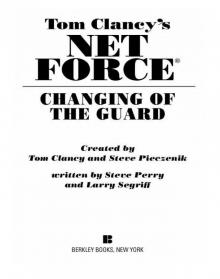 Changing of the Guard
Changing of the Guard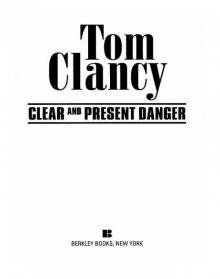 Clear and Present Danger
Clear and Present Danger Hounds of Rome
Hounds of Rome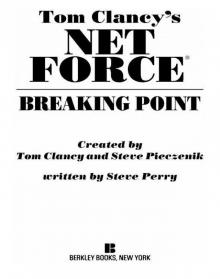 Breaking Point
Breaking Point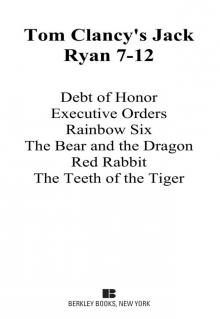 Tom Clancy's Jack Ryan Books 7-12
Tom Clancy's Jack Ryan Books 7-12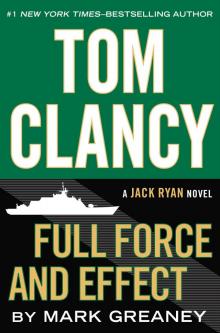 Full Force and Effect
Full Force and Effect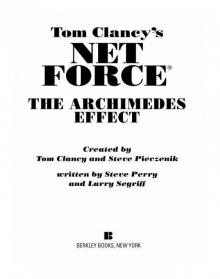 The Archimedes Effect
The Archimedes Effect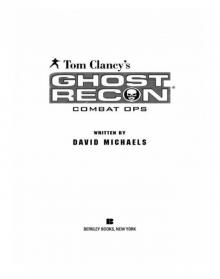 Combat Ops
Combat Ops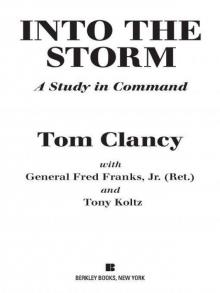 Into the Storm: On the Ground in Iraq
Into the Storm: On the Ground in Iraq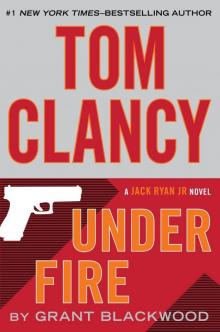 Under Fire
Under Fire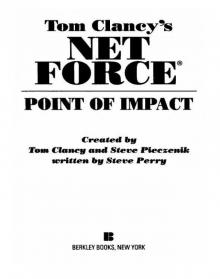 Point of Impact
Point of Impact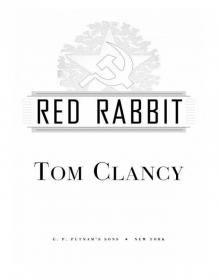 Red Rabbit
Red Rabbit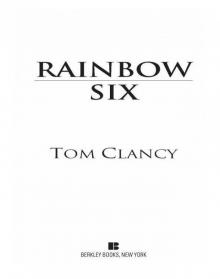 Rainbow Six
Rainbow Six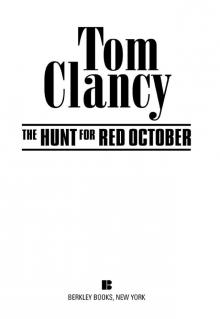 The Hunt for Red October
The Hunt for Red October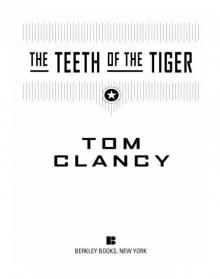 The Teeth of the Tiger
The Teeth of the Tiger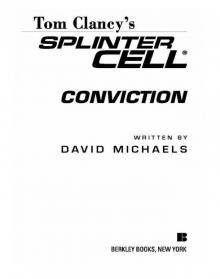 Conviction (2009)
Conviction (2009)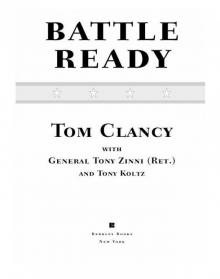 Battle Ready
Battle Ready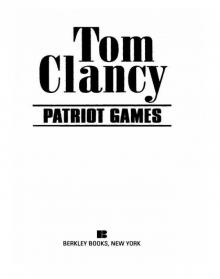 Patriot Games
Patriot Games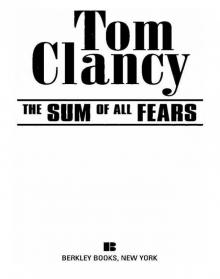 The Sum of All Fears
The Sum of All Fears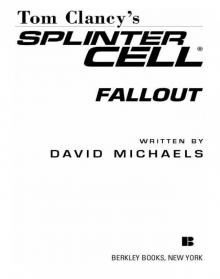 Fallout (2007)
Fallout (2007)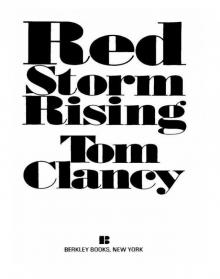 Red Storm Rising
Red Storm Rising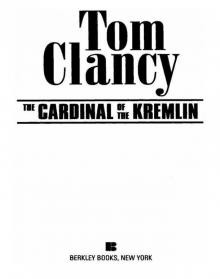 The Cardinal of the Kremlin
The Cardinal of the Kremlin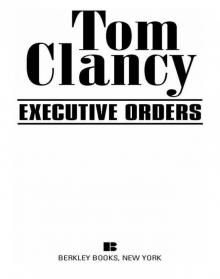 Executive Orders
Executive Orders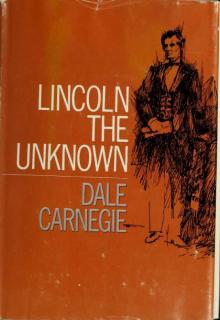 Lincoln, the unknown
Lincoln, the unknown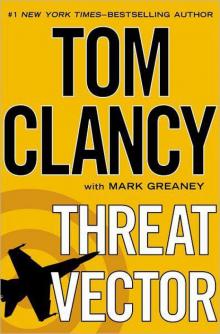 Threat Vector
Threat Vector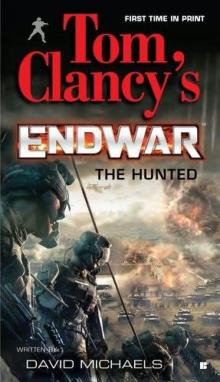 The Hunted
The Hunted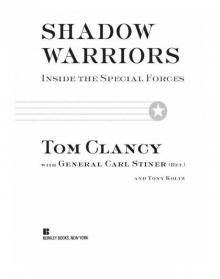 Shadow Warriors: Inside the Special Forces
Shadow Warriors: Inside the Special Forces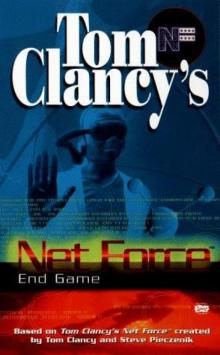 End Game
End Game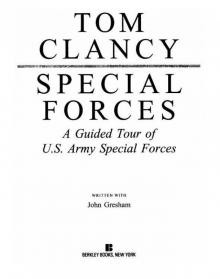 Special Forces: A Guided Tour of U.S. Army Special Forces
Special Forces: A Guided Tour of U.S. Army Special Forces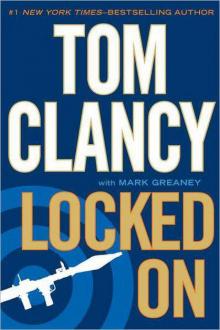 Locked On
Locked On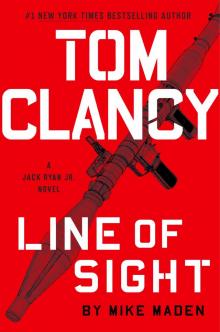 Line of Sight
Line of Sight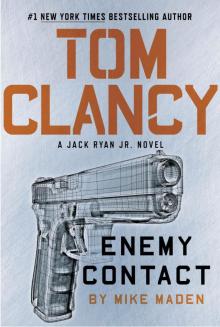 Tom Clancy Enemy Contact - Mike Maden
Tom Clancy Enemy Contact - Mike Maden Fighter Wing: A Guided Tour of an Air Force Combat Wing
Fighter Wing: A Guided Tour of an Air Force Combat Wing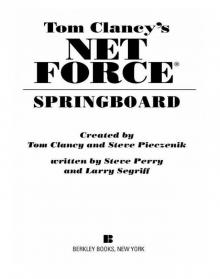 Springboard
Springboard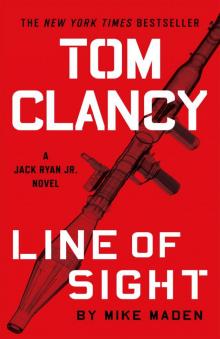 Line of Sight - Mike Maden
Line of Sight - Mike Maden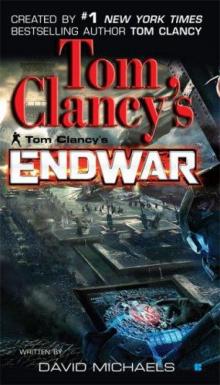 EndWar
EndWar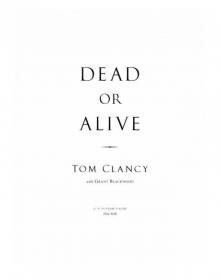 Dead or Alive
Dead or Alive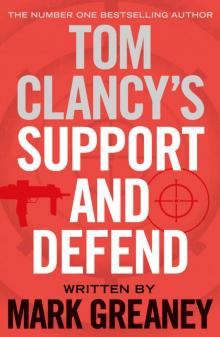 Tom Clancy Support and Defend
Tom Clancy Support and Defend Checkmate
Checkmate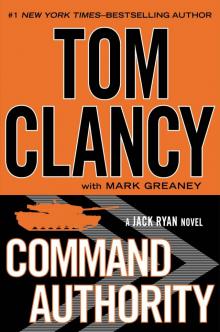 Command Authority
Command Authority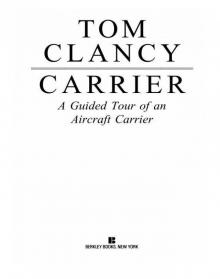 Carrier: A Guided Tour of an Aircraft Carrier
Carrier: A Guided Tour of an Aircraft Carrier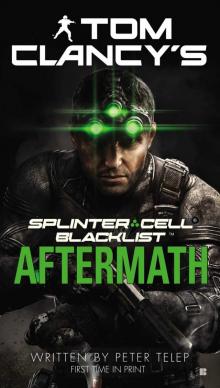 Blacklist Aftermath
Blacklist Aftermath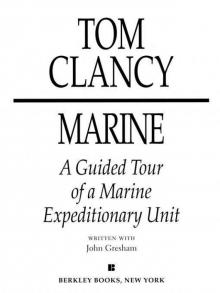 Marine: A Guided Tour of a Marine Expeditionary Unit
Marine: A Guided Tour of a Marine Expeditionary Unit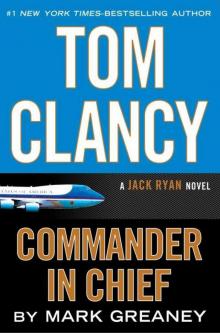 Commander-In-Chief
Commander-In-Chief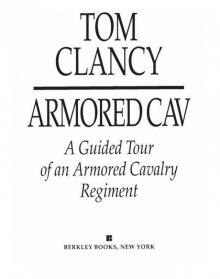 Armored Cav: A Guided Tour of an Armored Cavalry Regiment
Armored Cav: A Guided Tour of an Armored Cavalry Regiment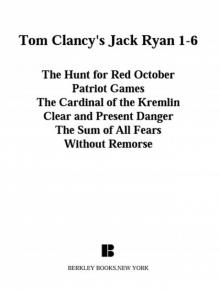 Tom Clancy's Jack Ryan Books 1-6
Tom Clancy's Jack Ryan Books 1-6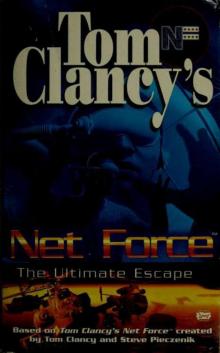 The Ultimate Escape
The Ultimate Escape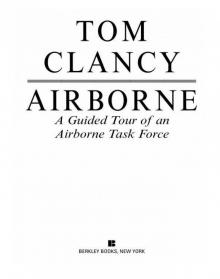 Airborne: A Guided Tour of an Airborne Task Force
Airborne: A Guided Tour of an Airborne Task Force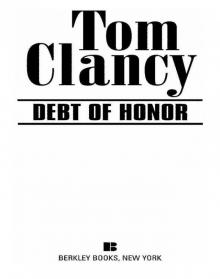 Debt of Honor
Debt of Honor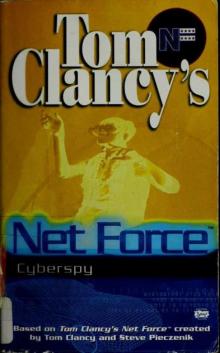 Cyberspy
Cyberspy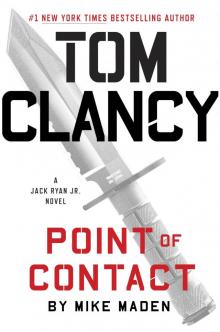 Point of Contact
Point of Contact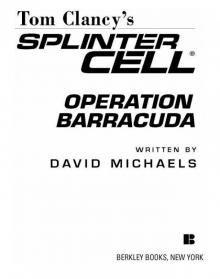 Operation Barracuda (2005)
Operation Barracuda (2005)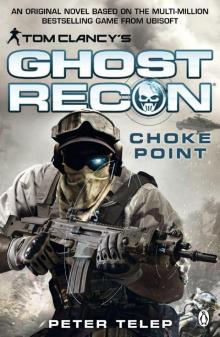 Choke Point
Choke Point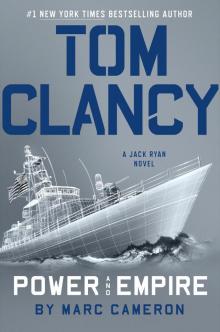 Power and Empire
Power and Empire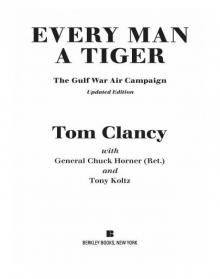 Every Man a Tiger: The Gulf War Air Campaign
Every Man a Tiger: The Gulf War Air Campaign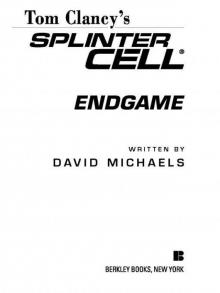 Endgame (1998)
Endgame (1998)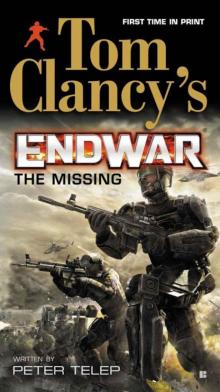 EndWar: The Missing
EndWar: The Missing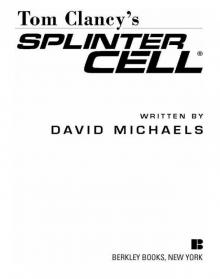 Splinter Cell (2004)
Splinter Cell (2004)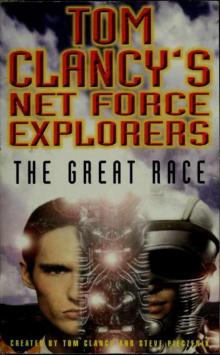 The Great Race
The Great Race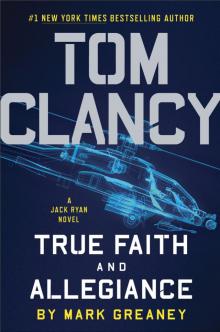 True Faith and Allegiance
True Faith and Allegiance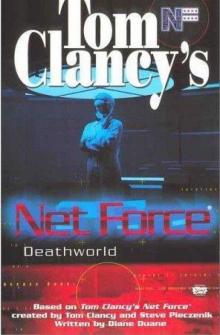 Deathworld
Deathworld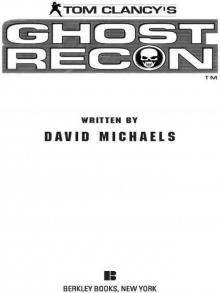 Ghost Recon (2008)
Ghost Recon (2008)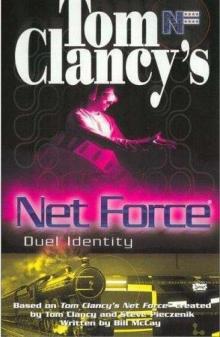 Duel Identity
Duel Identity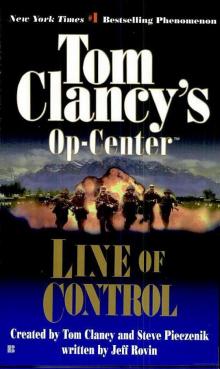 Line of Control o-8
Line of Control o-8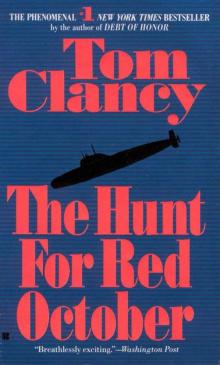 The Hunt for Red October jr-3
The Hunt for Red October jr-3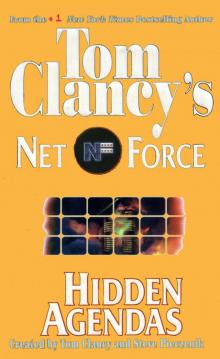 Hidden Agendas nf-2
Hidden Agendas nf-2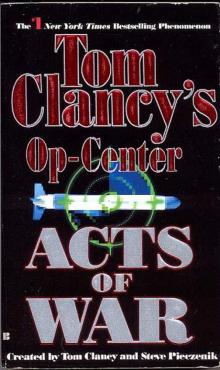 Acts of War oc-4
Acts of War oc-4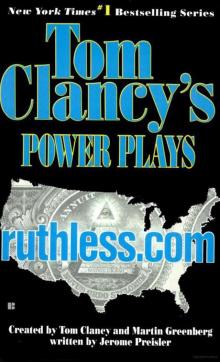 Ruthless.Com pp-2
Ruthless.Com pp-2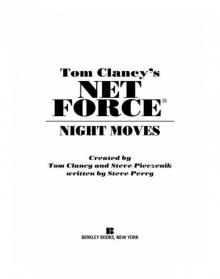 Night Moves
Night Moves The Hounds of Rome - Mystery of a Fugitive Priest
The Hounds of Rome - Mystery of a Fugitive Priest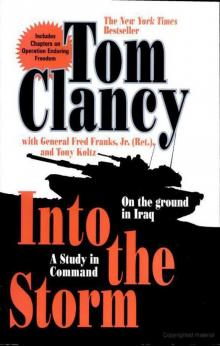 Into the Storm: On the Ground in Iraq sic-1
Into the Storm: On the Ground in Iraq sic-1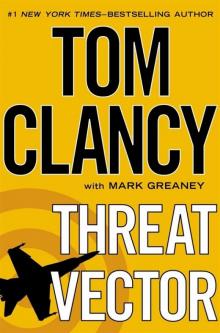 Threat Vector jrj-4
Threat Vector jrj-4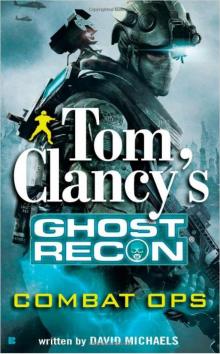 Combat Ops gr-2
Combat Ops gr-2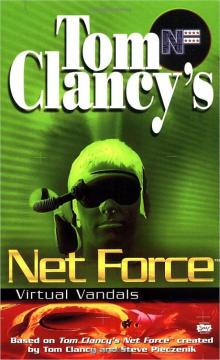 Virtual Vandals nfe-1
Virtual Vandals nfe-1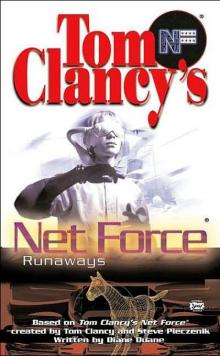 Runaways nfe-16
Runaways nfe-16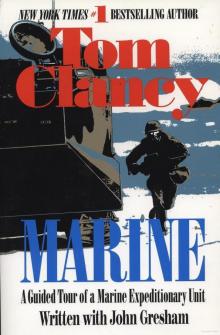 Marine: A Guided Tour of a Marine Expeditionary Unit tcml-4
Marine: A Guided Tour of a Marine Expeditionary Unit tcml-4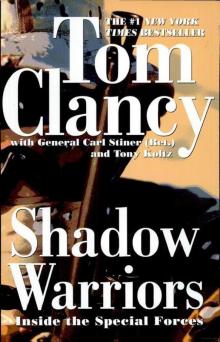 Shadow Warriors: Inside the Special Forces sic-3
Shadow Warriors: Inside the Special Forces sic-3 Jack Ryan Books 1-6
Jack Ryan Books 1-6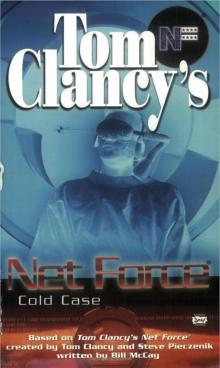 Cold Case nfe-15
Cold Case nfe-15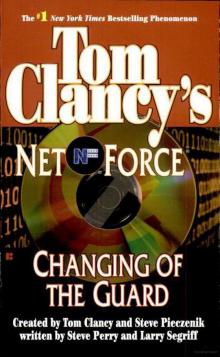 Changing of the Guard nf-8
Changing of the Guard nf-8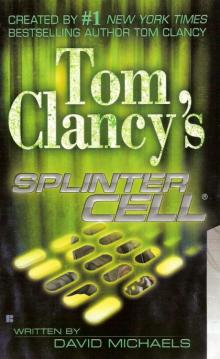 Splinter Cell sc-1
Splinter Cell sc-1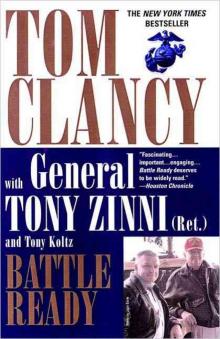 Battle Ready sic-4
Battle Ready sic-4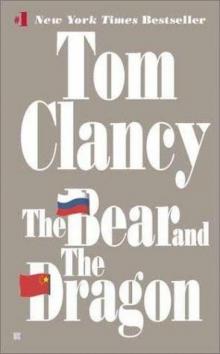 The Bear and the Dragon jrao-11
The Bear and the Dragon jrao-11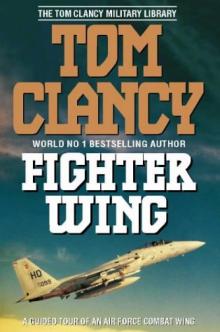 Fighter Wing: A Guided Tour of an Air Force Combat Wing tcml-3
Fighter Wing: A Guided Tour of an Air Force Combat Wing tcml-3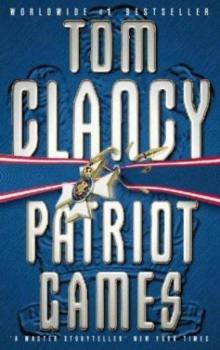 Patriot Games jr-1
Patriot Games jr-1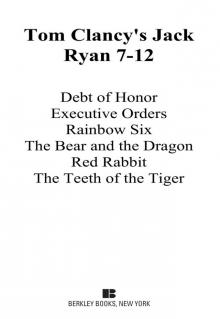 Jack Ryan Books 7-12
Jack Ryan Books 7-12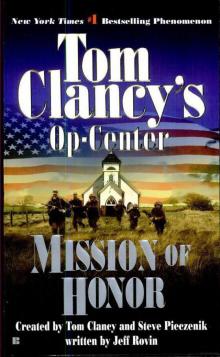 Mission of Honor o-9
Mission of Honor o-9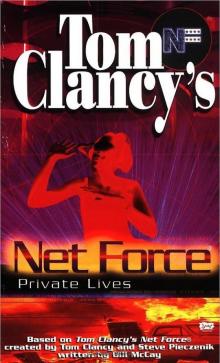 Private Lives nfe-9
Private Lives nfe-9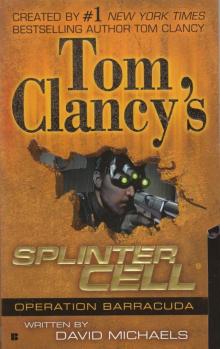 Operation Barracuda sc-2
Operation Barracuda sc-2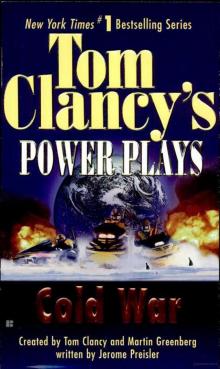 Cold War pp-5
Cold War pp-5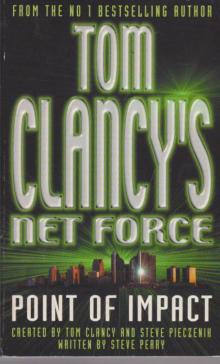 Point of Impact nf-5
Point of Impact nf-5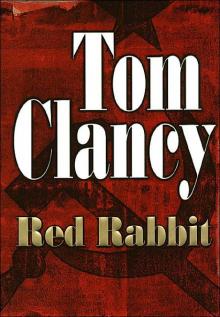 Red Rabbit jr-9
Red Rabbit jr-9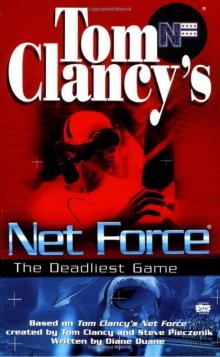 The Deadliest Game nfe-2
The Deadliest Game nfe-2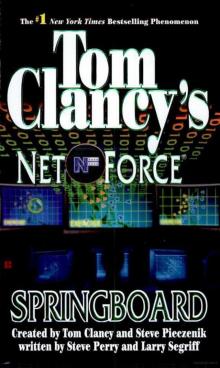 Springboard nf-9
Springboard nf-9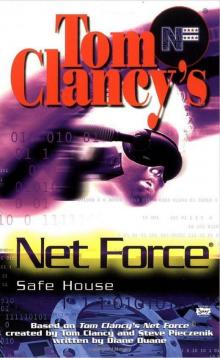 Safe House nfe-10
Safe House nfe-10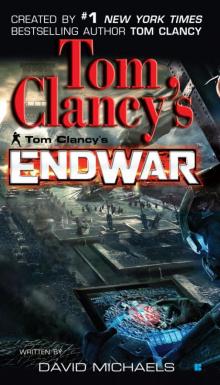 EndWar e-1
EndWar e-1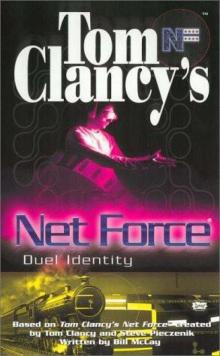 Duel Identity nfe-12
Duel Identity nfe-12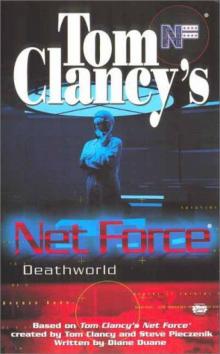 Deathworld nfe-13
Deathworld nfe-13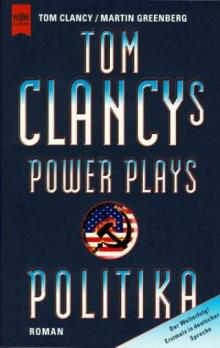 Politika pp-1
Politika pp-1 Rainbow Six jr-9
Rainbow Six jr-9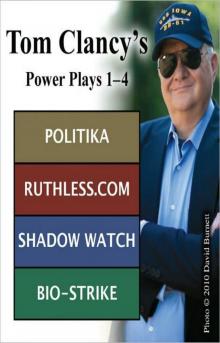 Tom Clancy's Power Plays 1 - 4
Tom Clancy's Power Plays 1 - 4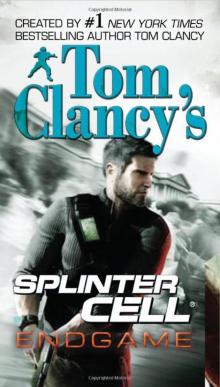 Endgame sc-6
Endgame sc-6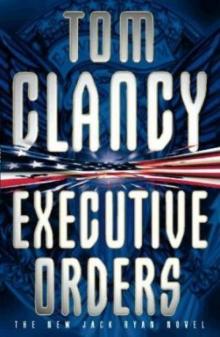 Executive Orders jr-7
Executive Orders jr-7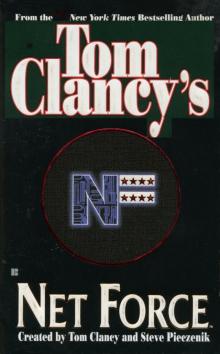 Net Force nf-1
Net Force nf-1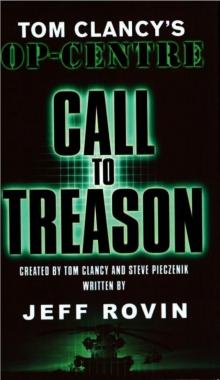 Call to Treason o-11
Call to Treason o-11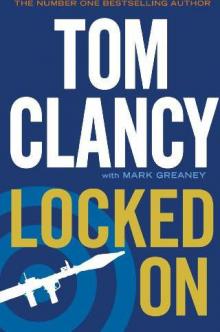 Locked On jrj-3
Locked On jrj-3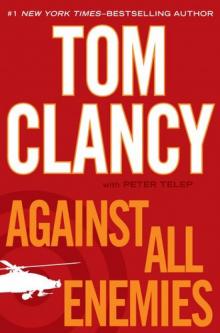 Against All Enemies
Against All Enemies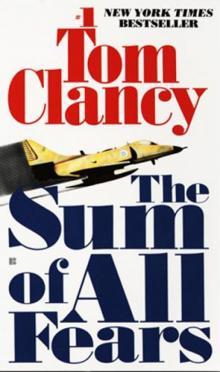 The Sum of All Fears jr-7
The Sum of All Fears jr-7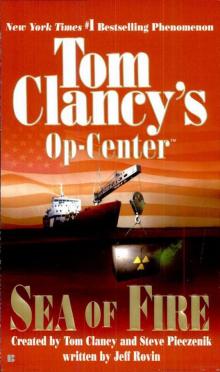 Sea of Fire o-10
Sea of Fire o-10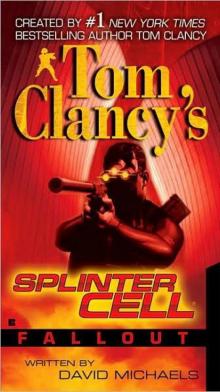 Fallout sc-4
Fallout sc-4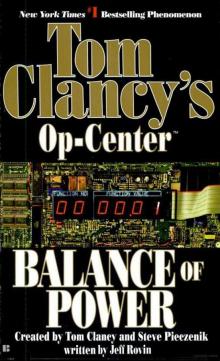 Balance of Power o-5
Balance of Power o-5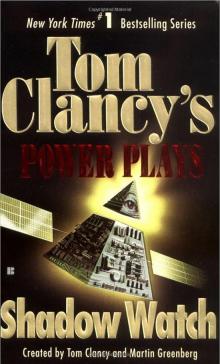 Shadow Watch pp-3
Shadow Watch pp-3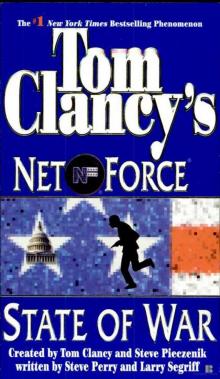 State of War nf-7
State of War nf-7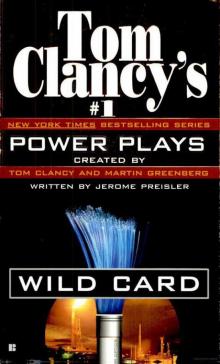 Wild Card pp-8
Wild Card pp-8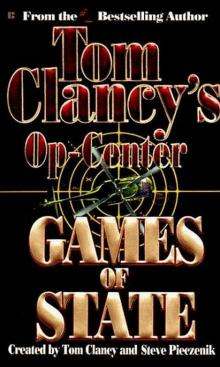 Games of State o-3
Games of State o-3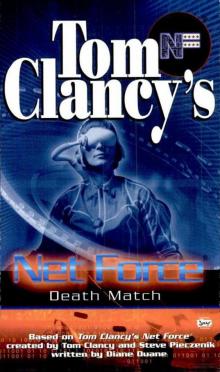 Death Match nfe-18
Death Match nfe-18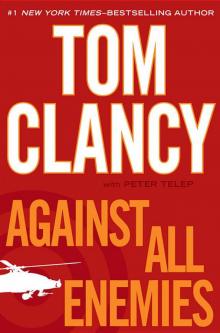 Against All Enemies mm-1
Against All Enemies mm-1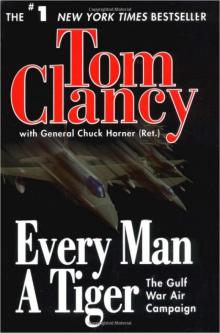 Every Man a Tiger: The Gulf War Air Campaign sic-2
Every Man a Tiger: The Gulf War Air Campaign sic-2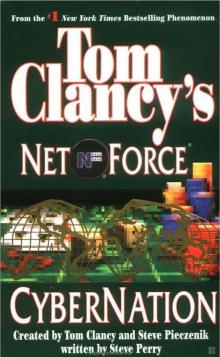 Cybernation nf-6
Cybernation nf-6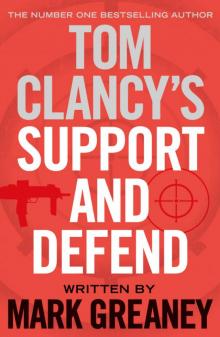 Support and Defend
Support and Defend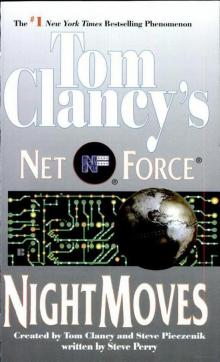 Night Moves nf-3
Night Moves nf-3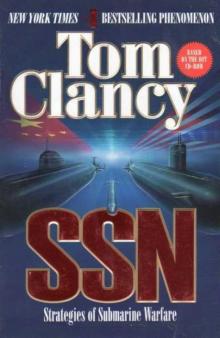 SSN
SSN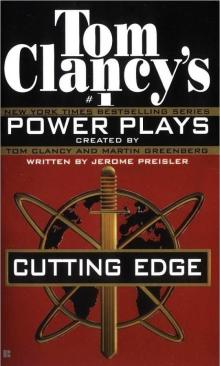 Cutting Edge pp-6
Cutting Edge pp-6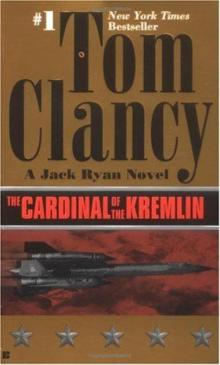 The Cardinal of the Kremlin jrao-5
The Cardinal of the Kremlin jrao-5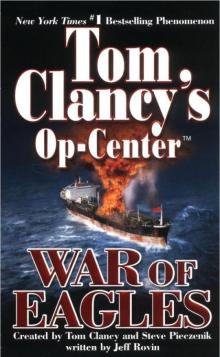 War of Eagles o-12
War of Eagles o-12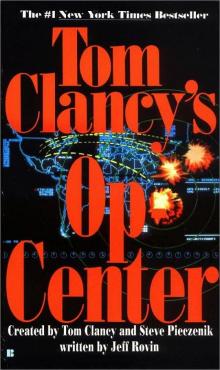 Op-Center o-1
Op-Center o-1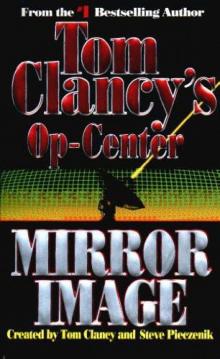 Mirror Image o-2
Mirror Image o-2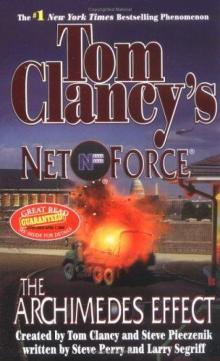 The Archimedes Effect nf-10
The Archimedes Effect nf-10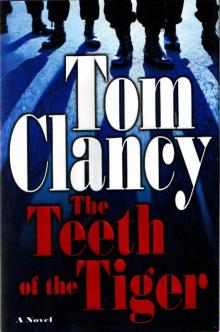 Teeth of the Tiger jrj-1
Teeth of the Tiger jrj-1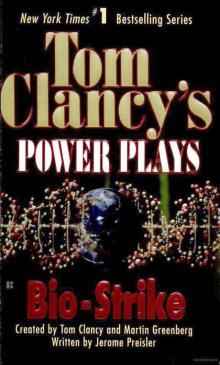 Bio-Strike pp-4
Bio-Strike pp-4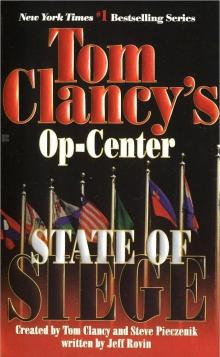 State of Siege o-6
State of Siege o-6 Debt of Honor jr-6
Debt of Honor jr-6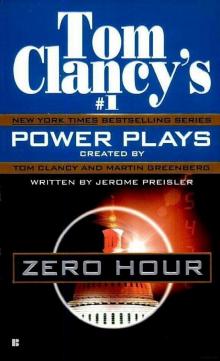 Zero Hour pp-7
Zero Hour pp-7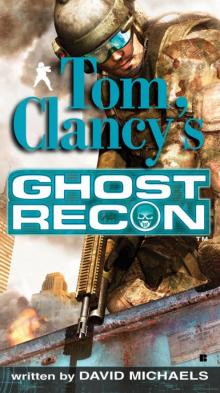 Ghost Recon gr-1
Ghost Recon gr-1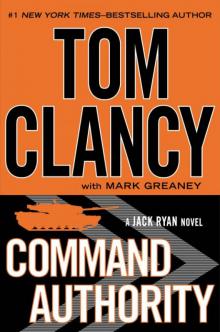 Command Authority jr-10
Command Authority jr-10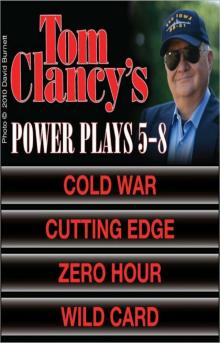 Tom Clancy's Power Plays 5 - 8
Tom Clancy's Power Plays 5 - 8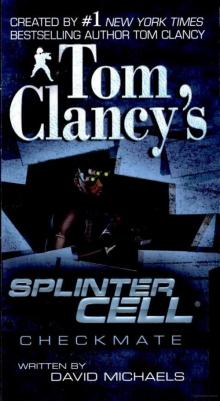 Checkmate sc-3
Checkmate sc-3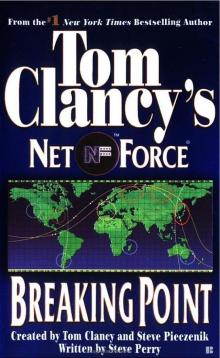 Breaking Point nf-4
Breaking Point nf-4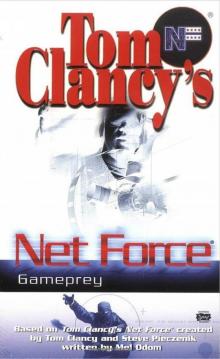 Gameprey nfe-11
Gameprey nfe-11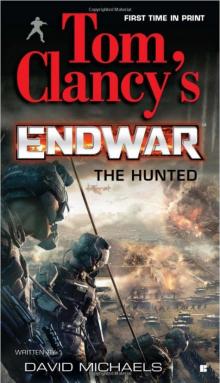 The Hunted e-2
The Hunted e-2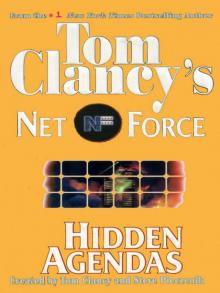 Hidden Agendas
Hidden Agendas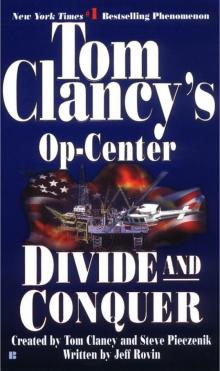 Divide and Conquer o-7
Divide and Conquer o-7